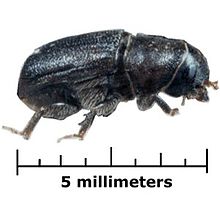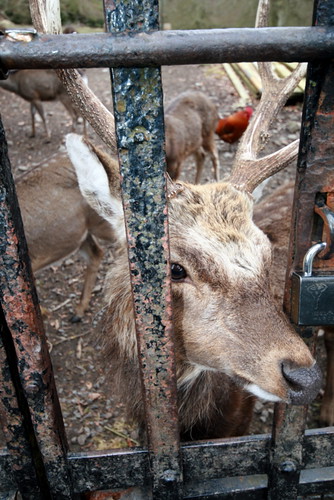Watch a hurley being made from scratch
As part of my project I went to visit my own hurley maker, Tom O’Donoghue, who kindly permitted me to film his work for the benefit of the project.
In the following videos he also outlines some salient points about the use of ash and how hurls are made. It makes for very interesting viewing, so have a look!
The craft of hurley making
Modern hurley making falls into two categories: production by means of a lathe, a template and ancillary electric equipment or alternatively by hand with the assistance of band saw and an electric sander. A noteworthy aspect of the art of modern hurley making is the distance that hurlers travel to secure hurleys from their favourite manufacturers with defined special features.
In l995, the profit margin on a hurley was £4/€5. Today, a hurley maker is extremely lucky to end up with a profit of €4 on a hurley. It is reasonable to assume that a hurley maker can produce on average one hundred finished hurleys in a forty hour week; this works out a gross weekly income of €400.00. It is apparent that the modern hurley making sector is in urgent need of reform to achieve long term sustainability. It may once again take the threat of the manufacture of a synthetic hurley to highlight the precarious and haphazard nature of producing hurleys, which are used in what is unmistakably the world’s greatest, most skilful and most exciting field game.
Bark Life
 The bark of the Ash tree is smooth and pale grey on young trees, but becoming thick and vertically fissured on older trees.
The bark of the Ash tree is smooth and pale grey on young trees, but becoming thick and vertically fissured on older trees.
The bark can be home to many different types of creatures, mostly beetles – including the Bark Beetle (pictured), thousands of which can live in any individual tree.
Of course, the rest of the tree can play home to lots more creatures. Jenkinstown Wood, because of its density and variety of trees in it, is home to many common grey squirrels, as well as countless birds including sparrows, crows, magpies, finches, bluebirds and even robins.
Ash Myth and Folklore
Throughout history all over the world, the Ash tree has many myths and folklore attached to it. The difference in some of the stories depending on their origin is a real testament to how popular and frequently the Ash has become throughout the world.
Ancient Irish legend said that plants and crops grown in the shadow of an Ash would be damaged by the sheer absence of sunlight that would fall on them! In Cheshire, Ash wood was used to get rid of warts or rickets.
Ash was known as ‘the Widow Maker’ in Sussex because its heaviness and propensity to fall at random often meant it likely to kill anyone who might be underneath one as it fell.
The bark of some Asian ash trees are used in Traditional Chinese Medicine to treat diarrhea, dysentery, and vaginal discharge. It is also good for the eyes where there is symptoms of redness, swelling, and pain. The dosage is 6-12 grams.
The Last Rose of Summer
You might wonder what poetry has to do with my tree or with this project, but the famous poem The Last Rose of Summer was written in Jenkinstown Wood by Thomas Moore in 1805 while staying at Jenkinstown Park. The piece is probably better known as a song, having been set to music by many composers including Sir John Stevenson (who wrote the most widely-known version), Felix Mendelssohn, Friedrich von Flotow and Heinrich Wilhelm Ernst. Indeed, the poem is so well-known that it was even immortalised in James Joyce’s Ulysses.
Stevenson’s setting has been recorded by Clannad, Sarah Brightman, Charlotte Church and the Irish Tenors, and Chloë Agnew (daughter of Twink). In this version, from Celtic Woman, it is sung by Méav Ní Mhaolchatha and New Zealander Hayley Westenra.
Take a moment to enjoy a beautiful work, composed where the shadows of my adopted tree now fall…
About Jenkinstown Park
Jenkinstown Park is situated off the N78, about 10km north of Kilkenny city and 11km south of Castlecomer.
Thomas Moore wrote ‘The Last Rose of Summer’ while staying at Jenkinstown House. The actual Rose that inspired him lives on: a cutting taken from it flourishes in the National Botanic Gardens at Glasnevin.
The wood has a picnic site and a number of marked trails.
The main tree species in the park are beech, ash, oak, and Norway spruce. Some original park trees from the 1870s survive and include a number of rare species such as the Chinese necklace poplar. A carpet of bluebells flowering in a beech wood in mid-to-late April is a special features of the park’s other flora.
The park is home to foxes, badgers, stoats, red and grey squirrels, and enclosed deer, as well as bats in the old church. Many species of birds – including pheasant, ravens, and the long-eared owl – inhabit the woods.
Basic Facts about my Tree
| Name (in English) | Ash |
| Name (in Irish) | An Fhuinseog |
| Name (in Latin) | Fraxinus excelsior |
| Location | Jenkinstown Wood, Co Kilkenny |
| Branches | Alternate and upwards |
| Trunk | Smooth and grey |
| Twig | Slender |
| Leaf shape | Opposite and feather-shaped |
| Leaf edge (blade) | Toothed |
| Leaf veins | Opposite |
| Leaf tip (Apex) | Pointed |
| Leaf tip (Texture) | Glossy |
| Flowers | Small, clustered, purple |
| Buds | Black, small and hard |
| Fruit | Green winged ‘keys’ |
| Seed | Small |
| Number of seed in fruit | Many |
| Number of dependent insect species | 41 |
| Mini-beasts found | Woodlouse, insect |
| Girth | 100cm |
| Age | 40 years old |
| Height | 16.5 metres |
| Area of canopy | 16 sq. m. |
| Growth on trunk | Ivy |

